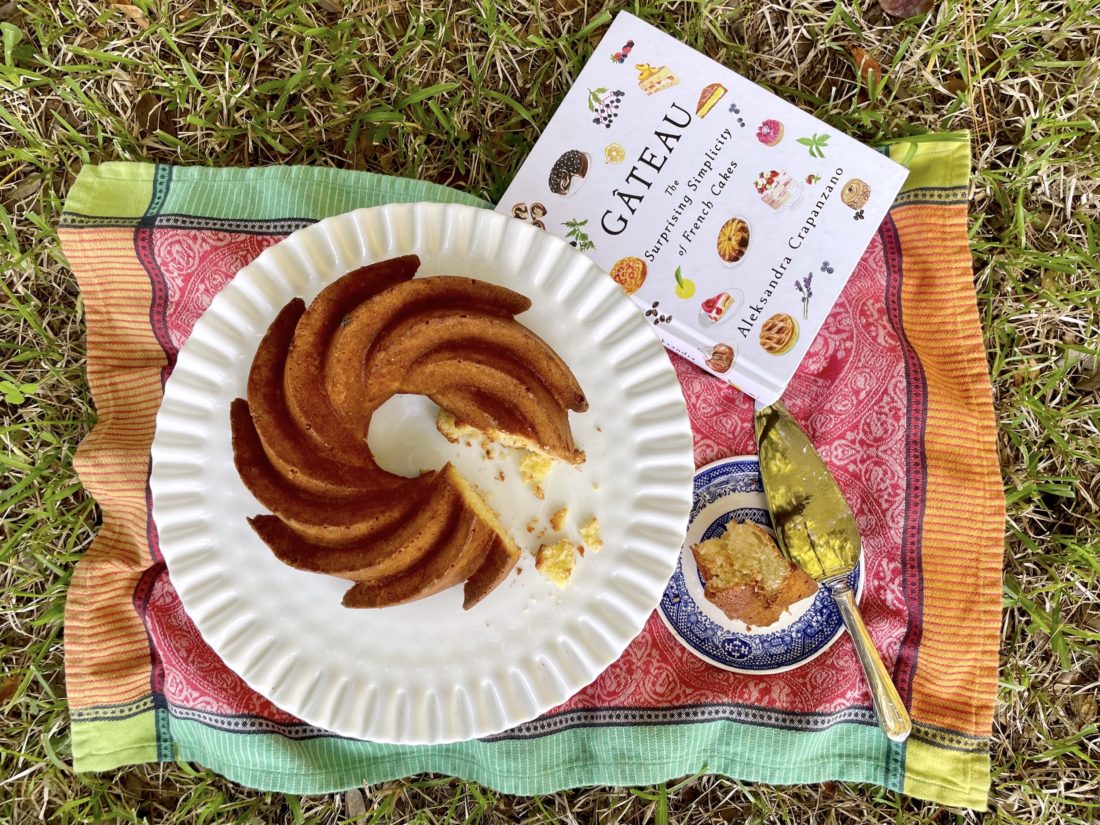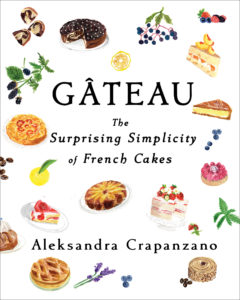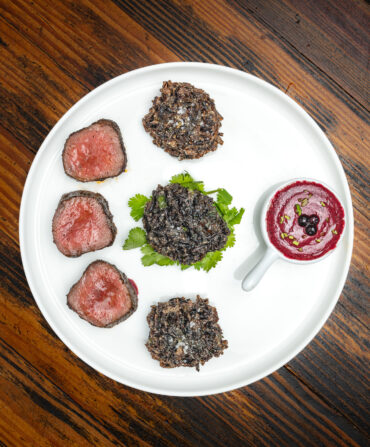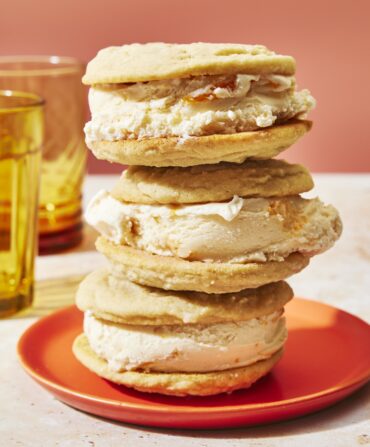There are two recipes that every child in France memorizes in school. One is for a gâteau au yaourt and the other is for this gâteau quatre-quarts, which translates roughly as four-fourths. The principle is much the same as in an American pound cake, which traditionally called for a pound each of butter, flour, sugar, and eggs. In a quatre-quarts, the eggs are weighed first in their shells, and then the butter, flour, and sugar are each weighed to match that number. The true difference, however, between these two very similar cakes is in the technique used to make the batter.
When making a pound cake, butter and sugar are creamed together. In the last step, flour is folded in gently and swiftly to keep the crumb delicate. The French have an altogether different approach. For starters, they use melted butter. This coats the flour in fat, preventing the formation of gluten, which leads to a tough cake. Gluten forms when the flour is exposed to the water in egg whites and the stress of mixing. The high fat content in the butter shields the flour from the water in the egg whites and creates a moist batter that requires minimal mixing. It is about as foolproof as a recipe can be, and it lends itself to nearly any adaptation you can imagine. The French add nuts, chocolate, coffee, spices, zest, extracts, crystallized ginger, liqueurs, and floral waters. A quatre-quarts doesn’t need a glaze but is happy to have one. It is moist but can absorb a syrup. And, like a pound cake, it is partial to fruit.
A quatre-quatre can be made in a loaf pan, a round pan, or a square one. As it is not so much a recipe but rather a ratio of equal parts, it is easily halved or doubled. The lack of a leavener such as baking powder or baking soda is not a mistake. It is simply not needed, as the eggs provide the lift. This cake couldn’t be easier to make, but here are a few pointers.
Eggs. Large eggs, still in their shell, weigh about 57 grams. (Without their shell, they weigh closer to 50 grams.) But some can run small, notably fresh farm eggs. When in doubt, weigh them. You may need an extra half or full egg. If you need only half an egg, whisk the egg and add half when you add the yolks.
Flour. Either all-purpose flour or cake flour can be used. Both work nearly equally well, given that there is little chance for gluten to form when mixing the batter. That said, the equivalent of all-purpose flour in France has a percentage of protein that is somewhere between our cake flour and our all-purpose flour. Using cake flour or half cake and half all-purpose flours does seem to yield a particularly tender crumb. If you have cake flour on hand, use it. If you don’t, no matter.
Butter. Yes, butter. The French have a lot to say about butter, and for good reason. In a nutshell, theirs is better. French butter has a higher fat content and gives baked goods an added layer of indulgence. If you feel like splurging, use it. If you decide to brown the butter, increase the amount you use by a tablespoon, as some of the liquid will evaporate during the browning. The French often use a slightly salted butter when baking. But as we [Americans] rarely do, I’ve added salt to the recipe.
Vanilla. The French don’t reach for vanilla when baking with quite the same habit as we do in the States. They are as likely to reach for rum or Cognac. The age-old traditional recipe for a quatre-quarts doesn’t call for vanilla or any flavoring, in fact. But today, in Paris, it will most likely contain vanilla or rum and the zest of either a lemon or an orange. And that is how I’ve come to love it.—Alexandra Crapanzano, from her new cookbook, Gâteau: The Surprising Simplicity of French Cakes.
Read more from Crapanzano and the connections between French and Southern baking here.









